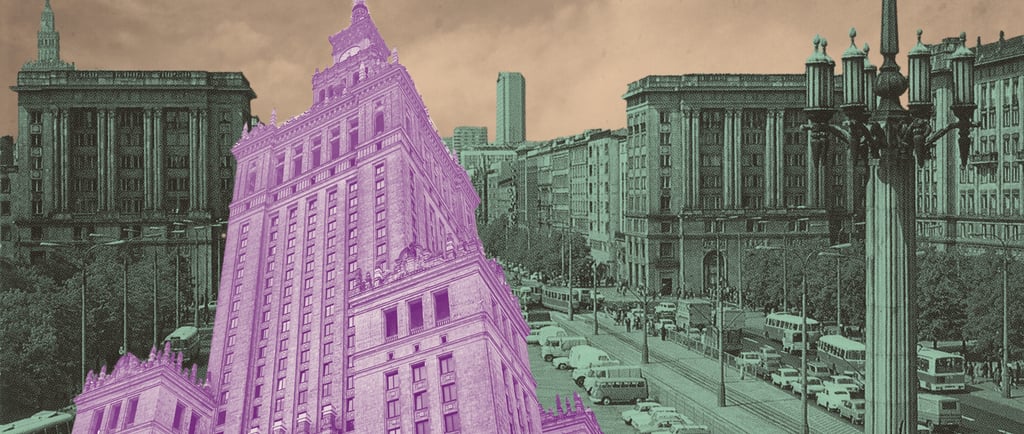Warsaw’s Iconic Palace: Culture, Controversy, and the Skyline
When people think of Warsaw, images of modern skyscrapers, cobblestone streets in the Old Town, and resilient post-war architecture often come to mind. But towering above them all — quite literally — is the Palace of Culture and Science (PKiN), a building that has shaped the city’s identity as much through its concrete mass as through the controversy it still stirs.
Karolina K.
5/28/20252 min read


A Soviet Gift or a Stone-Cold Reminder?
Built between 1952 and 1955, PKiN was a “gift” from the Soviet Union to post-war Poland — though many Warsaw residents might describe it more as an imposition. Proposed by USSR Vice Premier Molotov during a visit for Poland’s National Day in 1951, the project was fully financed and executed by the Soviet government, symbolizing both political dominance and architectural power.
Upon completion, its 231-meter spire made it the tallest building in Poland — a title it held for decades. But PKiN was never just about height. It was designed as a "dominant" landmark, meant to be seen from all corners of Warsaw, and it still orders the city’s visual geography today.
Visibility Designed to Impress — and Intimidate
PKiN’s sheer visibility across the city wasn’t an accident. Soviet planners, aided by urbanists like Stanisław Jankowski, carefully mapped view corridors from virtually every district of Warsaw. In a 2016 study, 296 ground viewpoints were identified from which parts of the Palace are visible — with 78 points offering a view of its upper turrets and 65 of the viewing terrace.
Interestingly, only a small central area — the "Central Quarter" bordered by Marszałkowska, Świętokrzyska, Emilii Plater, and Al. Jerozolimskie — provides a full ground-level view of the entire structure. Yet even from the outskirts, like Kopiec Powstania Warszawskiego, the Palace’s silhouette pierces the skyline, often floating above Warsaw’s sea of rooftops and trees.
The Architecture of Authority
Styled in Socialist Realism, the Palace is a brutal beauty of stone and symbolism. Its symmetrical form was mandated to reflect ideological clarity — laconic, austere, and meant to be unavoidable. For years, Warsaw’s skyline was deliberately kept low to ensure the Palace remained the central visual axis. Even today, Warsaw’s densifying cityscape threatens to obscure its visibility, prompting discussions about legal protection for key viewpoints.
A Building That Works — and Haunts
While its origin is controversial, PKiN is also surprisingly functional. It houses offices, museums, theaters, a swimming pool, and even an observation deck with one of the best panoramic views of Warsaw. Its clock tower, added in 2000, holds the title of the world’s highest situated timepiece and arguably helped reframe the building’s legacy from symbol of occupation to part of Warsaw’s urban DNA.
Still, not everyone is convinced. Critics, including famed Polish writer Leopold Tyrmand, once described it as a "Russian fist" in the heart of the city. In the 1990s, serious discussions arose about demolishing it. Instead, in 2007, PKiN was officially designated a historical monument, recognizing both its unique form and the layered history it embodies.
Warsaw’s Unavoidable Landmark
Whether you admire its monumental scale or question its symbolic weight, there’s no denying that PKiN is an essential part of Warsaw’s identity. It tells a story of post-war recovery, ideological conflict, and urban transformation. Like the city itself, the Palace is resilient, evolving, and never easily forgotten.
As Warsaw’s skyline grows ever taller, the Palace of Culture and Science remains a towering reminder: that history is always visible, sometimes controversial — and often breathtaking.
Keywords: Warsaw, Palace of Culture and Science, PKiN, Warsaw landmarks, Warsaw architecture, Soviet history, Polish culture, Warsaw tourism
Contact
Contact us via email:
Subscribe to our newsletter!
office@tellmemoretravel.com
© 2025. All rights reserved.
